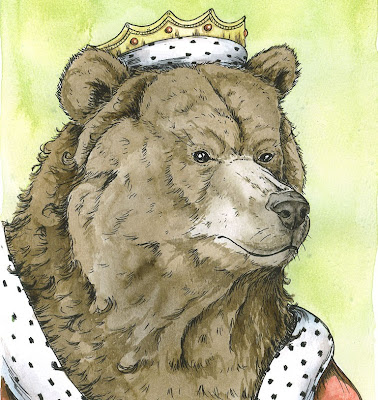This is Chittadhar Tuladhar, who wrote under the pen name Hridaya, a famous Nepali poet who lived from 1906 to 1982.
 |
| The man knows how to wear a beard. (picture from wikipedia) |
In 1940 he was imprisoned for ten years by the Rana regime for publishing this collection of poems, Padya Nikunjya, secretly abroad in India.
| Padya Nikunjya (picture from nepalbhasha.co.cc) |
The most controversial poem was entitled "Mother," and was written ostensibly in honor of his recently deceased mother. What was so inflammatory about these poems? They were published in the Newari language, at the time an illegal act. The government also suspected that "Mother" was actually about the mother tongue of the Newari people, which the Rana prime ministers were actively suppressing. In the same year, the poet Siddhicharan Shrestha was imprisoned for life for publishing the poem 'Barsa' in the Newari language, and Fatte Bahadur Singh was imprisoned for life for publishing the book 'Nepal Bihar.'
Unlike most of the languages of Nepal, the Newari language has an ancient and distinguished literary tradition. The language is usually referred to as 'Nepal Bhasha,' which can be confusing to outsiders because it means 'Nepal language.' This is a completely distinct language from the national language of Nepal, Nepali. In fact, Nepal Bhasha is a Sino-Tibetan language, genetically more akin to Sherpa and Mandarin than it is to Nepali (although it has been significantly influenced by Nepali and other Indo-European languages). It was the language of Kathmandu Valley, of the ancient Newari kingdoms of Kathmandu and Patan and Bhaktapur, of the Newari traders and craftsmen who managed the trade routes from Tibet to India. Before the unification, Kathmandu Valley was known as Nepal, and the language of the hill kingdom of Gorkha (the kingdom that was destined to conquer the Valley and unify the many kingdoms of Nepal) was known as 'Khas Bhasha' or 'Gorkha Bhasha.' Today, 'Khas Bhasha' is 'Nepali' and 'Nepal Bhasha' is 'Newari.'
The Rana Regime (and, I think to a lesser extent, the following Panchayat era) promoted a policy of one nation, one religion, one culture, one language. The ideal of a Hindu Nation created a unified identity for the country but gave justification to the dominance of Sanskritic culture and the caste system. Cultural, linguistic, and religious suppression went hand in hand. Linguistically, that policy was a double-edged sword; Nepali emerged as a practical lingua franca throughout the country, but at the expense of many languages that have disappeared or will disappear within the next century.
At the time, language activists worked underground, secretly publishing materials in their native languages. For me this is a fascinating time in Nepali history, but I have had difficulty finding information about it in English. I recently spoke with Amrit Yonjan-Tamang, a current activist for the Tamang language who secretly published works in Tamang during the Panchayat era. He told me about Bir Nembang and other Limbu activists who were arrested for illegally developing teaching materials for the Limbu language. The National Education Planning Commission of 1956 stated:
"The study of the local languages in Nepal other than the Nepali will hinder the effective development of the latter, given that the use by the student of languages other than Nepali in the house and society will cause Nepali to become an alien language. If the students are taught Nepali from the primary level other languages will gradually become unimportant, and it will help in national integration."
Today Amrit Yonjan-Tamang writes for legal Tamang language publications and is involved with many indigenous language groups that practice openly. Since the Revolution of 1990 the constitution of the government of Nepal has protected the rights of native language speakers, although the government has been haphazard in putting this into practice. Language rights are tied up with the rights of ethnic minorities in Nepal, and are often spoken about in the many protests and parades that one sees along the streets of Kathmandu. There are also government provisions for mother tongue primary education in Nepal.
Yet today many of these languages continue to decline. There is less overt oppression of the languages today, but there is enormous pressure to conform to the languages that represent economic security and modernity: Nepali and English. There are provisions in place for schools to teach in mother languages, and yet the overwhelming popular belief is that a quality education can only come from English immersion. I spent last Wednesday visiting all of the schools that are being considered for the Fulbright ETAs next year, and a school was considered more desirable (by the teachers with whom we spoke, and on the forms we had to fill out) the more grade levels that were nominally English medium. All but one school had embarked on a long-term program to become an English Medium government school, starting with 1st grade and moving upwards a grade a year.
We could say that the quote above from the Education survey is just as commonly believed today as it was in 1956, but you would have to replace the word 'Nepali' with the word 'English.'
For this blog post, I am indebted to Amrit Yonjan-Tamang. The names of authors and the quote from the education survey came from Process of Democratization and Linguistic (Human) Rights in Nepal by Govinda Bahadur Tumbahang.





